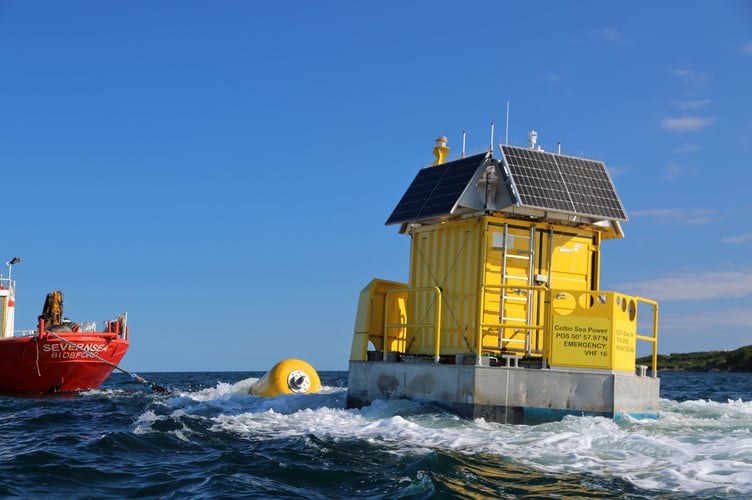Celtic Sea Power, a Hayle-based company working to unlock the potential of floating offshore wind, has developed a new wind resource model, in association with consultancy and engineering firm Wood.
This model will reduce project development risks and costs and assist decision-making on this key aspect of offshore wind development in the Celtic Sea.
This strategic approach to wind resource assessment has real significance for emerging offshore wind markets. Bytargeting existing data gaps to form a large-scale regional picture and taking a more collaborative approach, developers and stakeholders can be more informed much earlier in the process. This can potentially accelerate offshore wind development by up to two years. Significantly, the model is “bank grade”.
It utilises wind and metocean datasets recently acquired from three of the first floating LiDAR systems (FLS) ever deployed offshore within the Celtic Sea. This includes data sourced from CSP’s own deployments and a data sharing arrangement with a commercial partner.
Wood and CSP validated the input data against two mesoscale regional models. Further calibration then produced this bankable wind resource model which is now available with long term mean wind speeds for the region.
The mean wind speeds for the two offshore CSP FLS locations indicated that the planned 4.932 GW of FLOW deployment in the Celtic Sea by 2035 could produce enough electricity on an annual basis to meet the current electricity needs of over 8 million UK homes.

The FLS buoys were also fitted with wave sensors to show maximum wave heights for the two FLS locations. Alongside the wind resource data, this new wave data can support early design considerations for appropriate floating offshore wind structures in the Celtic Sea. It also provides early insights into potential future operations planning and ecosystem impacts.
Wood provided expert data analysis services and delivering their view, as an experienced lender’s technical authority, on the veracity of the modelled data and the extent of its spatial certainty.
Iain Nisbet, Director of Analysis (Clean Energy), from Wood commented: “The regional wind resource model developed provides a high level of confidence regarding the available wind resource in the areas of The Crown Estate Planned Development Area region in the Celtic Sea and is considered to be suitable to underpin bank-grade energy yield assessment.”
CSP’s approach demonstrated the value of collaboration between developers for reciprocal benefit – without compromising commercial interests. An innovative data-sharing arrangement has been established to enable collaboration between commercial developers with an interest in a robust data bank on the Celtic Sea wind resource. To date, seven developers have formally signed up to this agreement, including Flotation Energy who provided a third FLS dataset from their White Cross test and demonstration site.
Al Rayner, Flotation Energy’s Project Director for White Cross Offshore Windfarm added: “We were delighted to collaborate with Celtic Sea Power to build a model which is sufficiently robust to provide bank grade yield analysis. It shows just how important test and demonstration sites like White Cross are in helping future projects save time and money during the development phase.”
This programme of work has provided much needed information on the wind resource in the Celtic Sea. CSP intends to continue improving the model as new wind and metocean data becomes available, to further increase spatial and temporal coverage alongside confidence levels.
It has the potential to provide future Celtic Sea FLOW project developers with a yield analysis acceptable to investors without the need for additional FLS deployments saving development time, and deployment costs.





Comments
This article has no comments yet. Be the first to leave a comment.